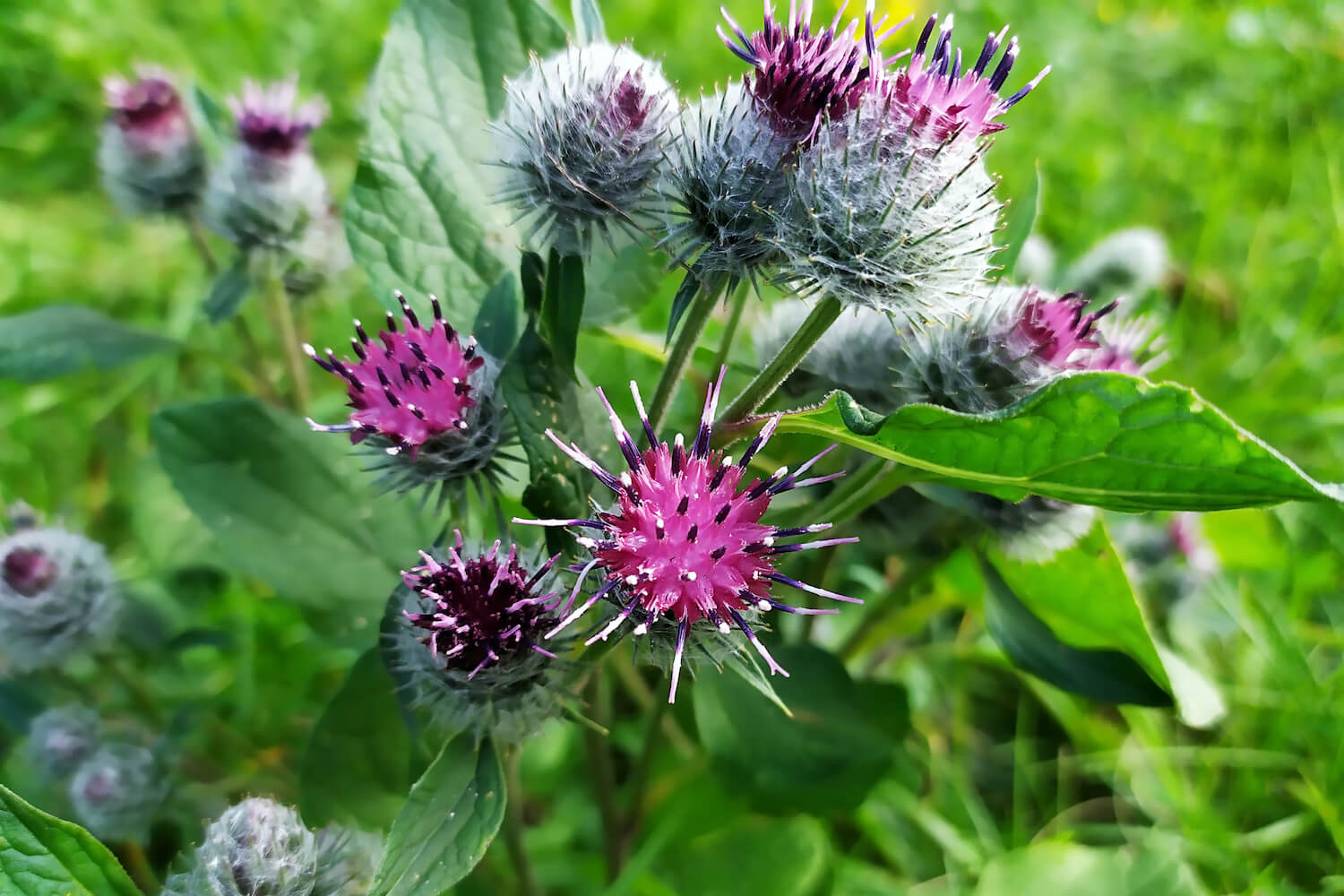
Burdock might not be the first plant that comes to mind, but it’s packed with surprises. Ever wondered what makes this humble herb so special? Burdock has been used for centuries in traditional medicine, cooking, and even as a source of inspiration for modern inventions. From its deep roots in herbal remedies to its role in the creation of Velcro, burdock is more than just a weed. Whether you’re curious about its health benefits, culinary uses, or historical significance, this article will uncover 20 fascinating facts about burdock that will leave you amazed. Ready to dig in? Let’s get started!
Key Takeaways:
- Burdock, a versatile plant with roots in traditional medicine, offers nutritional benefits and culinary uses. Its deep roots also benefit the garden ecosystem, attracting pollinators and aiding soil health.
- The burdock plant, known for inspiring Velcro, has a rich history and practical uses. From its role in traditional medicine to its culinary versatility, burdock is a fascinating and valuable plant.
What is Burdock?
Burdock is a fascinating plant with a rich history and numerous uses. Known for its large leaves and prickly burrs, it has been utilized in various cultures for centuries. Here are some intriguing facts about this versatile plant.
-
Burdock's Scientific Name: The scientific name for burdock is Arctium lappa. This name is derived from the Greek word "arktos," meaning bear, and "lappa," meaning to seize.
-
Native Regions: Burdock is native to Europe and Asia. However, it has spread to North America and other parts of the world due to its adaptability.
-
Biennial Plant: Burdock is a biennial plant, meaning it completes its life cycle in two years. In the first year, it grows leaves and stores energy in its roots. The second year, it flowers and produces seeds.
Burdock in Traditional Medicine
Burdock has been a staple in traditional medicine for centuries. Its roots, leaves, and seeds are all used for various remedies.
-
Detoxifying Agent: Traditional Chinese medicine uses burdock root as a detoxifying agent. It is believed to cleanse the blood and improve skin health.
-
Anti-Inflammatory Properties: Burdock contains compounds that have anti-inflammatory properties. These compounds can help reduce inflammation in the body.
-
Diuretic Effects: Burdock root is known for its diuretic effects, helping to eliminate excess water and toxins from the body.
Nutritional Benefits of Burdock
Burdock is not just a medicinal plant; it also offers numerous nutritional benefits. Its roots are particularly valued for their nutrient content.
-
Rich in Fiber: Burdock root is high in dietary fiber, which aids in digestion and promotes a healthy gut.
-
Vitamins and Minerals: It is a good source of vitamins such as vitamin C and E, as well as minerals like potassium, magnesium, and iron.
-
Low in Calories: Despite its nutritional richness, burdock root is low in calories, making it a healthy addition to various diets.
Culinary Uses of Burdock
Burdock is a versatile ingredient in the kitchen. It is used in various cuisines around the world, particularly in Asian dishes.
-
Gobo in Japanese Cuisine: In Japan, burdock root is known as gobo. It is commonly used in dishes like kinpira gobo, a stir-fry dish with carrots and burdock root.
-
Tea and Beverages: Burdock root can be dried and used to make tea. This tea is believed to have numerous health benefits, including aiding digestion and boosting immunity.
-
Pickled Burdock: In Korea, burdock root is often pickled and served as a side dish. This pickled version is tangy and crunchy, adding a unique flavor to meals.
Burdock in the Garden
Burdock is not just useful for its medicinal and nutritional properties; it also has a role in gardening and agriculture.
-
Soil Aeration: Burdock's deep roots help aerate the soil, improving its structure and health.
-
Companion Plant: It can be used as a companion plant to help deter pests and improve the growth of neighboring plants.
-
Pollinator Attraction: Burdock flowers attract pollinators like bees and butterflies, which are beneficial for the garden ecosystem.
Interesting Facts About Burdock
Beyond its practical uses, burdock has some fascinating characteristics and historical significance.
-
Inspiration for Velcro: The burrs of the burdock plant inspired the invention of Velcro. Swiss engineer George de Mestral noticed how the burrs stuck to his clothes and his dog's fur, leading to his creation of the popular fastening system.
-
Symbolism in Art: Burdock has been depicted in various works of art, symbolizing tenacity and resilience due to its hardy nature.
-
Historical Uses: In medieval Europe, burdock was used to treat a variety of ailments, from arthritis to skin conditions.
-
Wildlife Food Source: Burdock seeds and roots serve as a food source for various wildlife, including birds and small mammals.
-
Edible Leaves: While the roots are most commonly used, burdock leaves are also edible. They can be cooked and used in soups or stews, adding a slightly bitter flavor.
The Final Scoop on Burdock
Burdock's got a lot going for it. From its medicinal properties to its culinary uses, this plant's versatility is impressive. It's been a staple in traditional medicine for centuries, helping with everything from skin issues to digestive problems. Plus, it's packed with antioxidants and vitamins that can boost overall health.
In the kitchen, burdock root adds a unique flavor to dishes, especially in Asian cuisine. It's not just tasty but also nutritious, offering a good dose of fiber and minerals. Whether you're looking to improve your health or spice up your meals, burdock's worth a try.
So, next time you see burdock at the market or in the wild, remember its many benefits. This unassuming plant might just become your new favorite natural remedy and culinary ingredient.
Frequently Asked Questions
Was this page helpful?
Our commitment to delivering trustworthy and engaging content is at the heart of what we do. Each fact on our site is contributed by real users like you, bringing a wealth of diverse insights and information. To ensure the highest standards of accuracy and reliability, our dedicated editors meticulously review each submission. This process guarantees that the facts we share are not only fascinating but also credible. Trust in our commitment to quality and authenticity as you explore and learn with us.


